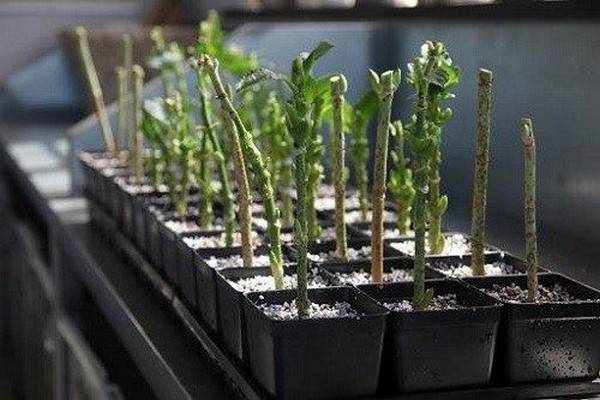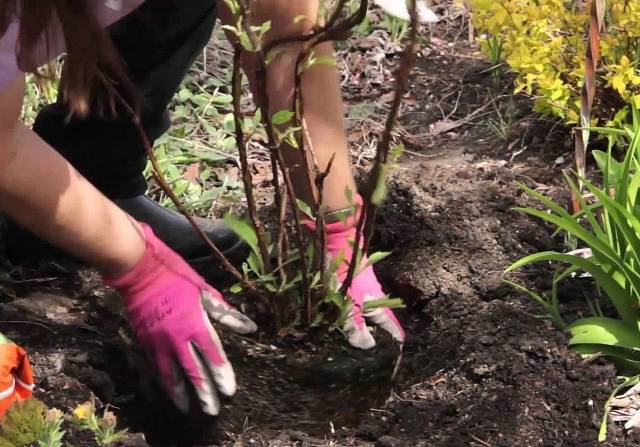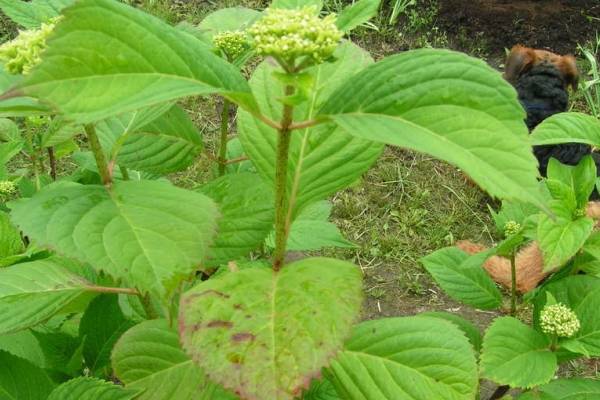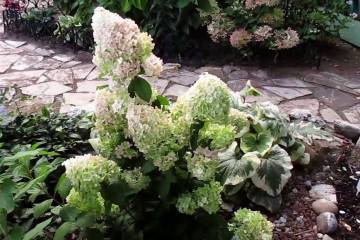Hydrangea Weems Red - how and when to plant, variety description
Content:
The hydrangea family has more than 70 varieties. Most of them can only grow in warm climates. But through the efforts of breeders, many varieties have been zoned. So the Weems Red hydrangea settled quite successfully on the territory of Russia and adapted to its changeable climatic conditions. It has become perhaps the most popular for landscape design of garden plots and parks.
Hydrangea was brought to Europe from China at the end of the 18th century. At the beginning of the 19th century, breeders came to grips with the plant. Today, 6 different types of crops are grown in Russian gardens. And the number of varieties has exceeded 100.
Particularly in demand by gardeners are paniculate types of hydrangea (Hydrangea paniculata), the lush bushes of which differ:
- dimensions;
- colors of buds;
- the size and shape of the brushes.
Of the entire family of hydrangeas, Williams Red's panicle hydrangea is the smallest. An adult plant grows up to only 1.5 meters. At the same time, the shoots that make up the crown are scattered on the sides, which gives the impression of a lush, blooming umbrella. Large inflorescences are incredible for such a baby. The length of the pyramidal panicle reaches almost half a meter.
In the description of Wim's Red hydrangea, there is another feature: about half of its buds are sterile, that is, even active pollination of flowers by bees will only give a result in half of the cases, and at the end of flowering a box with seeds is formed on them. They can be used to breed crops. Although this method does not provide a guarantee of obtaining parental qualities.
What is characteristic, fertile flowers have 4 petals and they are evenly distributed over the entire area of the brush. Therefore, the surface of the inflorescence resembles lace. At the beginning of flowering, all this luxury is boiling white. Opening, the petals become pearl pink, then bright pink. In the fall, the bush is already covered with lush, bright burgundy tassels. Even faded clusters of inflorescences are beautiful and in demand by florists.
Weems Red foliage is very beautiful. The leaf plate is large, dark green. Its shape is oval, tapering towards the end. The edges are serrated; distinct veins are visible over the entire surface. The dense leaves are opposite.
Hydrangea stems are hard, elastic, unbranched (not very branched). The bark of the stems is burgundy, which adds decorativeness to the entire bush. The inflorescences located at the ends of the shoots incline them down. This gives the bush a spherical look.
The Red Wings hydrangea itself is good even without flowers and has been decorating the garden since April. And from July to early October she has no equal. This flowering time allows Weems Red to be used as:
- solitary plant;
- component of flower arrangements;
- hedge.
But all this can be achieved only by creating normal conditions for culture for growth and development.
Reproduction of panicle hydrangea
The main breeding methods for hydrangeas are cuttings and rooting by layers. In the first case, you can use pieces of shoots after pruning or specially cut off the required amount from the bush.
The stalk is freed from the lower leaves, kept in a rooting stimulator ("Epin", "Kornevin") and placed in water. To disinfect water, you can add an activated carbon tablet. After the roots appear, the seedling is planted in a nursery garden and remains there for another two years. Then it is planted in a permanent place.
Rooting by layering is even more convenient. In this case, the shoot is not cut off, but buried in a shallow groove next to the bush. In places pinned to the ground, roots form over time. You don't need to touch the roots until next season.
Landing in open ground
As soon as the ground warms up, you can start preparing the landing hole. It is better to prepare it in advance, that is, 1-3 weeks before planting the seedlings.
Preparation and planting process:
- a soil mixture is prepared from turf, peat, sand and leafy earth (equally);
- a hole of 50x50 cm is dug;
- drainage is laid out on the bottom (expanded clay, broken brick, pebbles);
- ready-made soil is poured (about 8-10 cm);
- a seedling with straightened roots is installed in the center of the hole;
- the soil is poured to the surface of the earth and compacted;
- the new plant is abundantly watered and mulched with peat, humus or sawdust).
Necessary lighting
The greatest decorative effect of Weems hydrangea is achieved when planting a seedling in partial shade. In sunny areas, the inflorescences will be smaller and the flowering will be shorter. Direct sunlight is allowed only in the morning and evening.
Planting time
You can plant young bushes in open areas throughout the growing season. Although it is better to refuse planting before winter (October-November). It takes at least a month for a plant to adapt. The best time is early spring.
Flower care
Growing a beautiful bush and admiring the lush flowering for many years is not very difficult. The main thing is to adhere to simple rules of care.
Watering and feeding
The dense crown of hydrangea needs large amounts of water. She herself cannot get moisture from the depths, since her roots are superficial. For this reason, the bush needs to be watered abundantly and often. In dry, hot weather, this is 1-2 buckets every 3 days. It is better to water in the morning and evening. Watering can be combined with sprinkling, as well as loosening, weeding.
During the growing season, Winx Red hydrangea needs to be fed every two weeks. The crop responds very well to organic fertilizers (mullein, bird droppings). The nitrogen contained in them contributes to the growth of green mass. The same goal is pursued by feeding the bush with milk whey.
During the period of budding and further flowering, potassium, iron, phosphorus are needed. Before winter, to strengthen immunity and increase winter hardiness, the plant is fertilized with superphosphate.
Pruning
Pruning is very important to Vince's hydrangea. With the right haircut, you can maximize the number of inflorescences. It is recommended to prune the bush twice a season. The first cut is sanitary. It is carried out before the start of sap flow. All damaged, dried, growing inside the bush and very thin shoots are removed. As a result, no more than 12 healthy branches should remain.
If the bush is an old bush, a rejuvenating haircut is performed. That is, age-old shoots are cut almost at the root (stump no more than 7 cm).
The second pruning is formative. It should be done after flowering. With this operation, the shape of the crown is corrected, and substandard shoots, dried inflorescences are removed.
Protection against diseases and pests
For hydrangea Red, as for all other members of the family, chlorosis is considered a common disease. It appears when the acidity of the soil decreases. The addition of iron chelate to the irrigation water quickly regenerates the plant. It is enough to apply top dressing once a week.
Other frequent visitors to hydrangeas include:
- powdery mildew;
- anthracnose.
- gray and white rot;
- spotting.
They can be fought with such means as "Skor", "Maxim", "Horus", "Quadris", "Ridomil Gold".
Lush foliage also attracts pests. Aphids, Colorado potato beetle, spider mites enjoy the juices of the terrestrial part of the hydrangea with pleasure. Gardeners use fungicides against them, such as "Fufanon", "Aktara", "Aktellika".
Preparing for winter
It is believed that Wim's Red hydrangea is able to withstand frosts down to -30 degrees. But in cold climatic zones of Russia, it is recommended to cover it for the winter. This is due to the superficial location of the roots of the culture. In the event of frost after heavy snowfalls, a high snow crust can be considered a reliable shelter. If frosts have come and there is no snow at all, the plant is in danger. To avoid such a situation, even adult bushes should be highly mulched and covered with spruce branches (or any covering material). For mulching, straw, sawdust, dry foliage, humus, peat are suitable.
The beauty of Weems Red can and should be admired. Even with sufficiently high growing requirements, such a bush will justify the investments and hopes of the gardener. The panicle hydrangea Weems Red will delight with long and lush flowering for many decades.





















